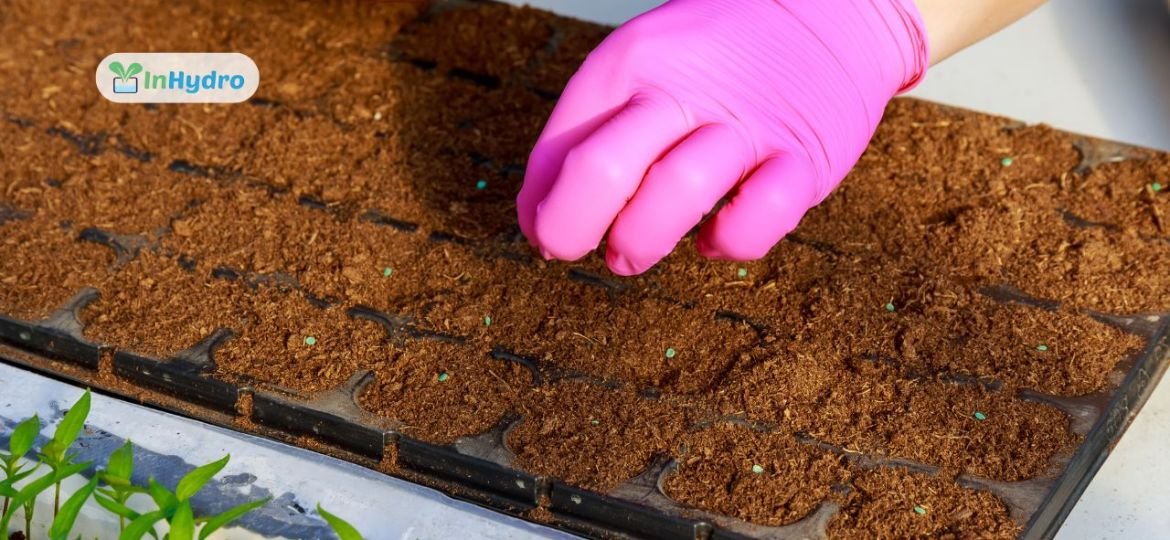
Why Coco Peat is a Game-Changer for Hydroponics
Hydroponics has revolutionized farming by providing soil-free cultivation methods, enabling efficient use of resources and year-round crop production. A critical component of this innovative technique is the choice of grow media, and among the many options, coco peat stands out as a highly effective solution. Let’s explore how coco peat enhances hydroponics and why it has become an essential element in sustainable farming.
What is Coco Peat and Why Does It Matter?
Derived from the fibrous husk of coconuts, coco peat is a natural, lightweight medium known for its excellent water retention and aeration properties. This by-product of the coconut industry is increasingly recognized as a sustainable alternative to soil in hydroponics systems.
Its unique characteristics not only provide a stable growing environment for plants but also contribute to eco-friendly farming practices, making it a preferred medium for growers around the globe.
The Role of Coco Peat in Hydroponic Farming
1. Maintains Optimal Moisture Levels
Plants in hydroponic farming rely on consistent moisture for growth, and coco peat excels at holding water while preventing oversaturation. Its porous structure ensures a balanced environment where roots can absorb water and nutrients efficiently.
2. Supports Healthy Root Growth
The soft, spongy texture of coco peat allows roots to spread freely, promoting robust root systems. This flexibility is vital for plant stability and nutrient uptake, especially in systems like grow towers or Dutch bucket systems.
3. Enhances Nutrient Delivery
Although coco peat is inert, it acts as a reservoir for the nutrient solution, ensuring that plants have consistent access to essential elements. This quality improves the efficiency of the hydroponic system and leads to higher yields.
4. An Environmentally Friendly Option
Sustainability is a cornerstone of modern farming, and coco peat aligns perfectly with this principle. Made from agricultural waste, it reduces dependency on non-renewable resources and minimizes environmental impact.
5. Resistant to Contaminants
Coco peat is naturally sterile and free from pathogens, making it an excellent choice for maintaining a disease-free growing environment. Its neutral pH further ensures that it doesn’t interfere with the nutrient balance of the hydroponic solution.
Applications of Coco Peat Across Hydroponic Systems
Drip Irrigation Systems
In systems that use drip irrigation, coco peat efficiently distributes water and nutrients, maintaining a steady supply for plants like lettuce and strawberries.
Vertical Hydroponics
When used in vertical farms, coco peat provides a lightweight yet supportive medium for crops, making it ideal for compact growing spaces.
Dutch Bucket Systems
Coco peat is especially useful in Dutch bucket systems, where it supports larger crops such as tomatoes, cucumbers, and peppers. Its ability to retain moisture ensures that these plants thrive in controlled environments.
Standalone Grow Media
For smaller-scale setups, coco peat is often used on its own or blended with perlite to improve drainage and aeration.
Preparing Coco Peat for Hydroponics
Here’s how to prepare coco peat for your hydroponic setup:
- Hydrate and Expand
- Most coco peat comes in compressed blocks. Soak it in water until it expands and reaches its natural fluffy texture.
- Wash to Remove Salts
- Rinse the expanded coco peat thoroughly to remove any residual salts that could affect plant growth.
- Mix or Use as Is
- Depending on your system, you can mix coco peat with other grow media like perlite or use it directly.
- Load Into the System
- Add the prepared coco peat to the grow trays, buckets, or towers, ensuring it’s evenly distributed for optimal root support.
Why Coco Peat is a Preferred Choice
Feature | How It Helps in Hydroponics |
High Water Retention | Reduces the frequency of irrigation while keeping roots hydrated. |
Eco-Friendly | Sustainable and biodegradable, contributing to greener farming. |
Neutral pH | Provides flexibility in nutrient management. |
Disease Resistance | Limits exposure to pathogens for healthier plants. |
Coco Peat vs. Other Growing Media
While there are several grow media available, coco peat offers unique advantages:
- Rockwool: Effective but difficult to dispose of due to its non-biodegradable nature.
- Clay Pellets: Reusable but offers less water retention than coco peat.
- Perlite: Lightweight and drains well but lacks the water-holding capacity of coco peat.
Coco peat strikes a balance between water retention, aeration, and environmental sustainability, making it a superior choice for most hydroponics systems.
Coco Peat with InHydro
At InHydro, we prioritize quality and performance in every product we offer. Our premium coco peat is designed to enhance efficiency in hydroponic farming, whether you’re a home grower or running a commercial operation. By choosing InHydro coco peat, you’re investing in a sustainable, high-yield solution for your farm.
FAQs
Q: Can coco peat be used multiple times?
A: Yes, coco peat is reusable with proper cleaning and sterilization after each crop cycle.
Q: Is coco peat suitable for all hydroponic crops?
A: Coco peat is versatile and works for most crops, though some plants requiring high drainage may need it blended with perlite.
Q: How does coco peat benefit vertical hydroponics?
A: Its lightweight nature and excellent water retention make it ideal for stacked growing systems like vertical farms.
Q: Does coco peat affect the pH of the hydroponic solution?
A: Coco peat is naturally pH neutral, allowing easy adjustment for specific crops.
Conclusion
Coco peat has emerged as an essential medium for soil-free farming, offering unmatched benefits for hydroponics systems. From its excellent water retention to its eco-friendly nature, coco peat enables sustainable and efficient crop production.
Partner with InHydro for high-quality coco peat and expert support to elevate your hydroponic farming experience. Together, we can achieve sustainable agriculture with innovative solutions!

